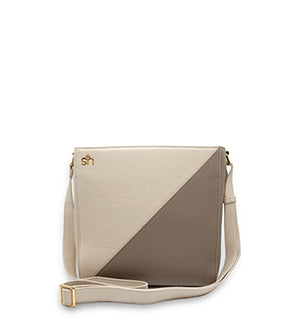Beyond Cowhide: Rise of Plant-Based Vegan Leather

The world is changing rapidly, and with it, our relationship to the materials we use. Gone are the days of relying solely on animal hides for our leather needs. The rise of plant-based vegan leather is not just a trend but a revolution in sustainability and innovation. This new material not only offers an eco-friendly alternative but also opens up a world of creative possibilities for design and manufacturing.
Imagine a world where the leather on your favorite handbag comes from a plant rather than an animal. This shift from cowhide to plant-based alternatives is not just a matter of ethics but also a significant step towards a more environmentally conscious future. With the growing awareness of the environmental impact of traditional leather production, many industries are now probing for alternatives that are not only sustainable but also stylish.
The use of plant-based materials for leather is not new, but it has gained significant attention in recent years due to advancements in technology and consumer demand. These new materials not only mimic the look and feel of traditional leather but also offer improved durability and versatility. From fashion to furniture, the applications of plant-based leather are vast and varied.
In this article, we will delve into the world of plant-based vegan leather, exploring its benefits, challenges, and the innovative ways it is being used. We will examine the types of plant-based materials used, the manufacturing processes, and the industries that are embracing this new technology. Get ready to discover a future where fashion and sustainability merge seamlessly.
The leather industry has been a significant contributor to the fashion world for centuries, with cowhide being the primary material used in the production of leather goods. However, as the demand for sustainable and eco-friendly alternatives grows, the rise of plant-based vegan leather is beginning to revolutionize the industry.
The Evolution of Leather
Leather has been a staple material in various industries, from fashion to furniture and automotive. Historically, leather was derived primarily from cowhide, which required the slaughter of millions of animals annually. This method not only raised significant ethical concerns but also posed environmental risks due to the waste generated during the tanning process. The traditional approach to leather production has also been criticized for its reliance on harsh chemicals and water pollution.
The Emergence of Plant-Based Leather
In recent years, advancements in technology and material science have led to the development of vegan leather alternatives. These materials, often referred to as "vegan leather," are derived from plant-based sources such as pineapple leaves, mushrooms, and even apple peels. The process of creating these plant-based materials is more sustainable and eco-friendly compared to traditional leather production.
Types of Plant-Based Leather
There are various types of plant-based leather, each with its unique properties and advantages:
- Piatex: Developed from pineapple leaves, Piatex is a durable and versatile material that can be used for a wide range of applications, including clothing, shoes, and accessories.
- Mycelium Leather: Made from mycelium, the root structure of mushrooms, this material is highly sustainable and can be grown in a controlled environment.
- Apple Leather: Derived from apple peels, this material is light, flexible, and biodegradable. It is also a great example of upcycling, as it repurposes waste to create a valuable product.
Benefits of Plant-Based Leather
The shift towards plant-based leather offers numerous benefits:
- Environmental Sustainability: Plant-based leather production requires significantly less water and energy compared to traditional leather production. This reduces the environmental footprint of the industry.
- Ethical Considerations: The use of plant-based materials eliminates the need for animal slaughter, addressing ethical concerns and animal welfare issues.
- Cost-Effectiveness: As the technology improves and production scales up, plant-based leather may become more cost-effective than traditional leather, making it a viable alternative for manufacturers.
Challenges and Future Developments
Despite the advantages, the transition to plant-based leather is not without challenges:
- Market Adoption: While the demand for sustainable products is growing, the market needs to be educated and convinced of the benefits of plant-based leather.
- Scalability: Sustaining large-scale production and ensuring the availability of raw materials remain crucial challenges.
- Cost-Competitiveness: Ensuring that plant-based leather is competitive in terms of cost with traditional leather will be critical for its widespread adoption.
The Future of Leather
The future of the leather industry is shifting towards a more sustainable and eco-friendly direction. Plant-based leather is no longer a niche product but a viable alternative to traditional leather. As technology advances and market demands shift, we can expect to see a significant increase in the production and use of plant-based leather. This transition will not only reduce the environmental impact but also address ethical concerns, making the leather industry more sustainable and responsible.
A New Era of Sustainability
The rise of plant-based leather marks a significant step towards a more sustainable future. By embracing innovative materials and manufacturing processes, the leather industry can contribute to a cleaner, greener world. As consumers become more aware of the environmental and ethical implications of their choices, the demand for plant-based leather is likely to continue growing, driving innovation and change in the industry. The next era of leather will be defined by sustainability, ethics, and innovation, paving the way for a more responsible and future-proof industry.
Inspiration for a Sustainable Future
The transition to plant-based leather is not just a technological or economic shift but also a moral imperative. It is a call to action for the fashion and leather industries to adopt more sustainable practices. By embracing innovation and embracing plant-based materials, we can create a more beautiful, more responsible, and more sustainable world. The future of leather is here, and it is green.
You may also be interested in: S+H Blog Swatzell + Heilig
Indulge in the craftsmanship of attainable luxury Italian leather. Exclusive designs and impeccable functionality, handcrafted to last a lifetime. Shop the Swatzell + Heilig's fashion collection now!
Powered by flareAI.













Leave a comment